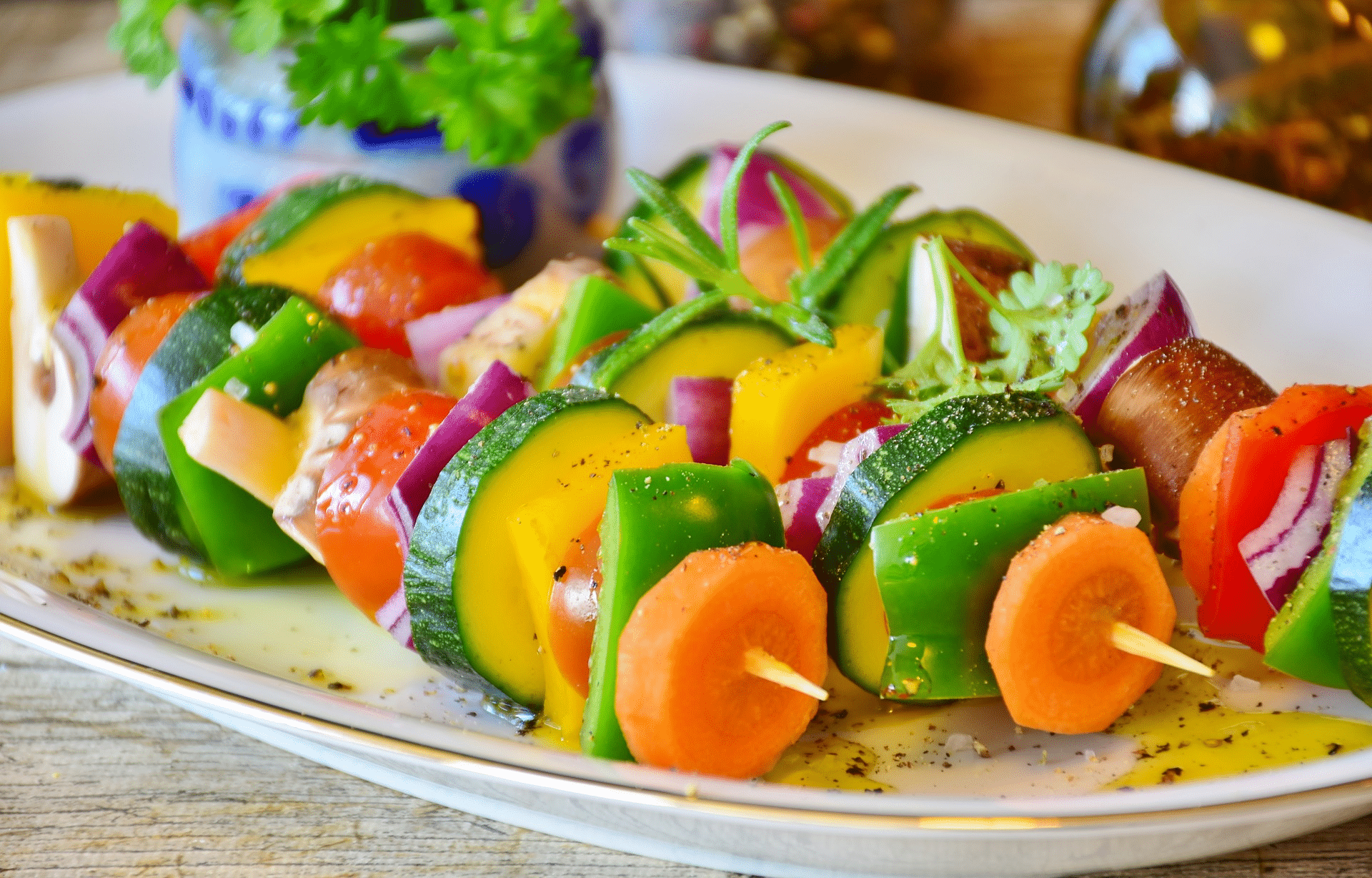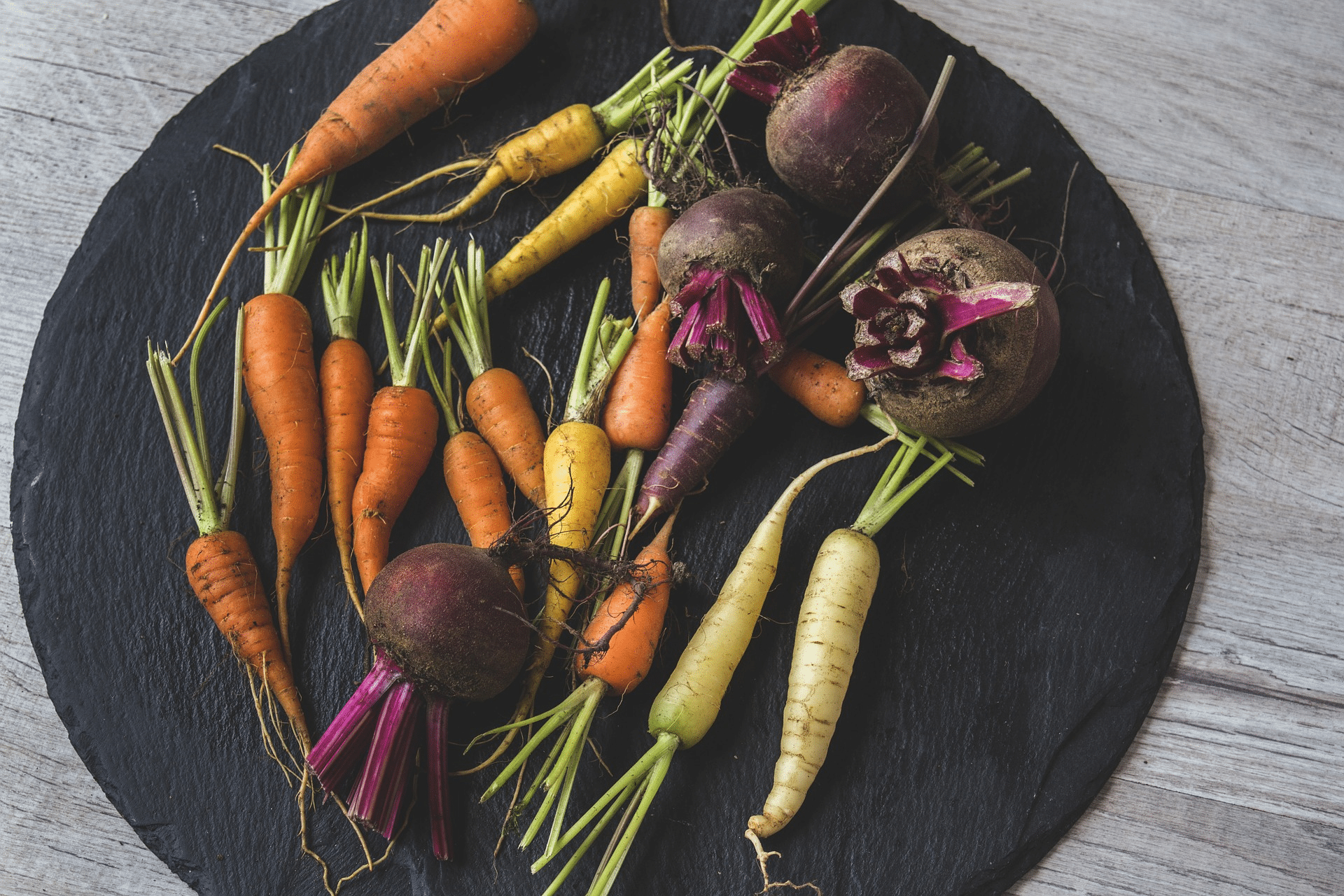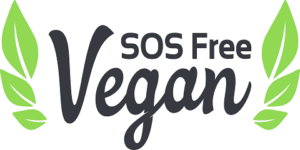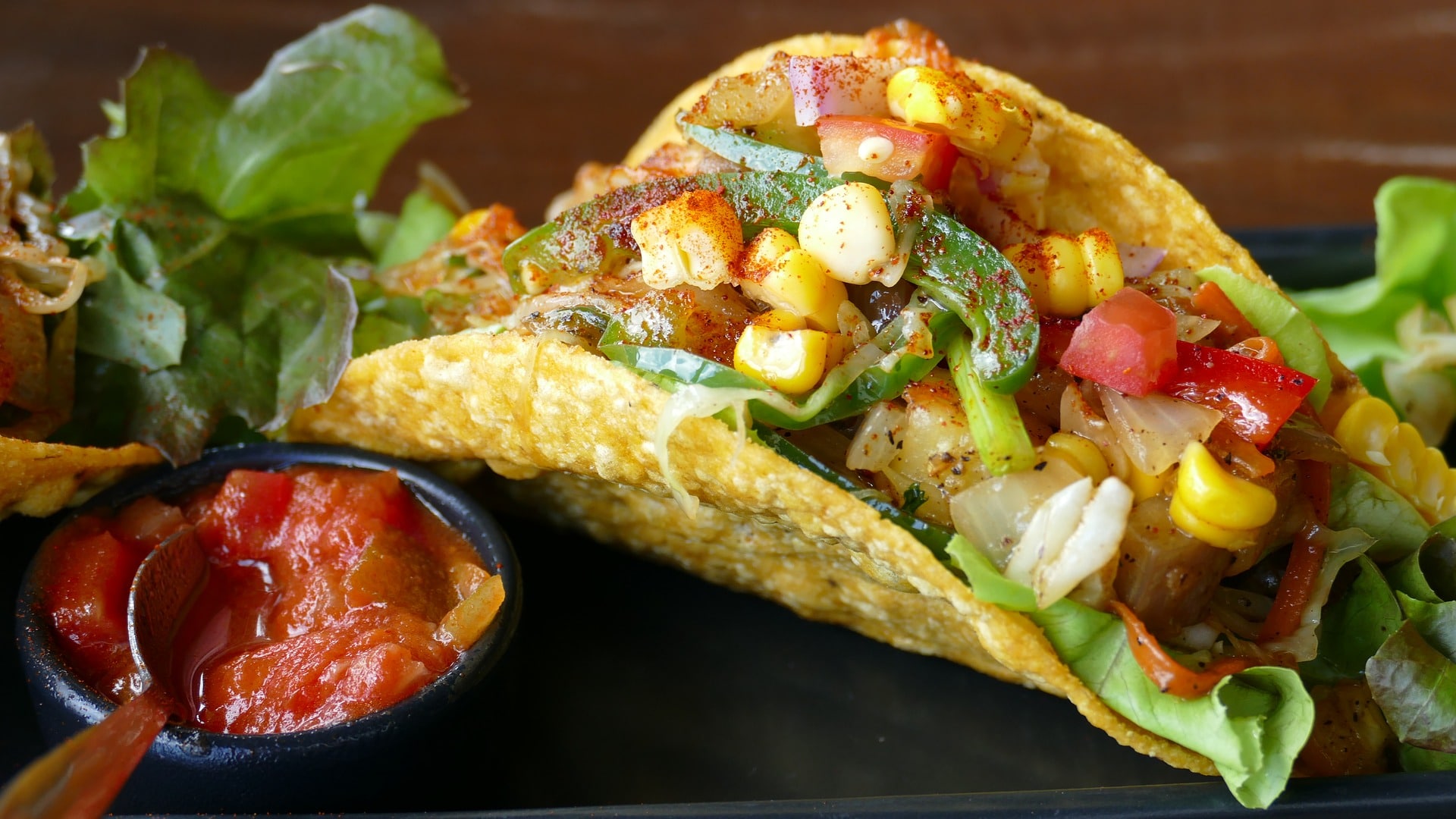Last Updated on April 23, 2023 by admin
You’ve read this blog and it’s certainly piqued your curiosity about what it means to be an SOS-free vegan. You’ve learned about this branch of veganism from our introductory post and maybe even read a book or two about SOS diet that we recommended.
From the information you’ve gleaned, you know what you can’t eat on this diet. It’s in the name, after all: you’re supposed to omit all salt, oil, and sugar as a SOS-free vegan. It is completely plant based diet. If you’re also cutting out dairy, animal products, and animal byproducts, what does that leave you with?
We’re so glad you asked. This is a very popular question for those contemplating beginning an SOS-free vegan diet. That’s why we thought it was worth addressing. In this post, we’ll fill you in on all the ways an SOS diet can be enriching, varied, and delicious.
Here’s What You Can Eat on a SOS-Free Vegan Diet (SOS diet meal plan)
Vegetables
Vegetables are the main component of a vegetarian diet, which you may have been on before becoming a vegan. If so, then you’re probably already familiar with the wealth of vegetables out there.
If not, we’re happy to fill you in now on which vegetables conform to a SOS diet:
- Bell peppers: One of the most colorful vegetables, bell peppers come in such hues as red, orange, yellow, and green. Red peppers have a sweet taste, orange and yellow a bitter and spicy flavor, and green peppers are kind of in between. You can use bell peppers to add a natural kick to lunch or dinner.
- Carrots: If you’ve only ever eaten orange carrots before, there are so many more varieties out there! You can find purple, white, yellow, and red carrots to add beauty and color to any meal. This sweet-tasting vegetable does indeed have the vision benefits you’ve always heard of. In addition, it can improve digestion, aide in a better brain, and improve heart health.
- Kale: You remember the big superfoods trend, right? One of the healthiest eats to come out of that trend was kale. There’s a reason for that. Due to its dark color, it provides iron when consumed. Since you’re not getting as much iron after you cut out meat, kale is a great replacement.
- Cauliflower: Cauliflower is a SOS free dieters best friend. It can be used to replace almost anything. Seriously. You can use it as the base for pancakes, chocolate cake, noodles, muffins, as the bread for grilled cheese, in lieu of chicken or steak, and even as the main ingredient in sushi!
- Lettuce: There are so many varieties out lettuce that you’ll never get tired of them. Make sure you sample frisee (a type of endive), dandelion greens, butter lettuce, and spicy arugula.
- Onions: The colorful hues of onions are more than just for show. Red onions tend to taste sweeter while white onions are often tangier. No matter which color you choose, all onions are said to contribute to growing longer hair, controlling diabetes, bettering digestion, and boosting immunity.
- Spinach: There’s a reason Popeye was always so crazy about spinach. You get plenty of minerals, carotenoids, and vitamins in this vegetable, including calcium, iron, folic acid, Vitamin K, and Vitamin C.
- Tomatoes: Tomatoes are such a versatile veggie. You can eat them raw, slice ‘em, or make them into a paste or a sauce. What’s not to love?
- Avocados: Today, avocados are still having a big moment. Popular among the younger generation, they might be a little pricy, but their creamy texture and somewhat sweet taste is irreplaceable.
- Eggplant: We had to mention eggplant on this list. This is a popular meat substitute for vegans. You’ll soon fall in love with this flavorful purple vegetable and its amazing taste.
- Mushrooms: There are tons of edible mushroom varieties, and all give you your daily dose of Vitamin D. These include truffles, Matsutakes, oysters, gypsies, and stone mushrooms.
Want more veggies? There’s still so much more! These include beloved picks like olives, peas (snap, snow, etc.), endive, radicchio, beetroot, Brussels sprouts, artichokes, cucumber, broccoli, celery, and cabbage.
Before you start your SOS diet, you should go to a farmer’s market or your favorite grocery store and explore the produce section. There, you just might find lesser-known but still delicious options like rhubarb, fiddlehead fern, lemongrass, chayote (a type of gourd that comes from Mexico, Costa Rica, and Brazil), lotus root, daikon (like a radish), bamboo shoots, and kohlrabi (which is in a similar vein to cauliflower, broccoli, and cabbage).

Fruits
What kinds of flavors are you in the mood for? With fruits, you can get different levels of sweetness. There are some super-sweet fruits, while others have a sour flavor, and others still are milder.
Let’s start with the sweeter ones. Since these taste so pleasing, they tend to contain more sugar. As you remember from our introductory guide on SOS free diet veganism, fruits have natural sugars. These are not the processed sugars you’re trying to avoid as an SOS diet, so it’s okay to consume in moderate quantities. These fruits include:
- Figs: The sugar content per fig is eight grams, so you might want to eat them sparingly. Figs are an interesting fruit that comes from an Asian flowering plant. They’re known for their dark outer skin, teardrop shape, and fleshy red center.
- Lychees: Lychees are native to China, but this soapberry has migrated to other parts of the world. The red outer shell cannot be eaten, nor can the white inner shell. Instead, you have to peel that back to get to the fruit inside.
- Mangoes: Yes, mangoes are especially yummy in the summertime, but be careful. These fruits are overloaded with natural sugars: 46 grams per mango! You might want to cut your serving down to a cup, so you get only 23 grams.
- Cherries: Dried cherries may be ultra-sweet, but they’re also full of sugar, about 30 grams. Try to eat natural cherries out of the bag, as you can then reduce your sugar by 10 grams.
- Grapes: Although you wouldn’t think it, certain varieties of grapes are very sugary. The aptly-named cotton candy grapes are a major culprit, as are red grapes.
If you prefer your fruits sour, try the following:
- Limes: You can and should chop into a lime and chow down. Doing so can aide in digestion as well as safeguard you against cancer and colds. You may have thought oranges are the only citrus fruit with Vitamin C, but you can get 35 percent of the stuff from a lime!
- Lemons: Although you’re in for quite a tart experience, you can eat lemons, too. You shouldn’t do so often because the fruit can wear away teeth enamel, but when you do, you can digest foods better. You may also be protected from cancer, anemia, and kidney stones.
- Oranges: If eating limes isn’t quite your thing, oranges are a good alternative. If you enjoy a medium-sized orange, which is 130 grams in weight and two-and-a-half inches, expect 70 milligrams of Vitamin C.
- Granny Smith Apples: Apples lean either sweeter or milder, but Granny Smiths are about as tart as you can get. These and other apples are low-calorie and can be used in salads and even vegan pies.
- Sour cherries: If you’re concerned about all the sugars in cherries, try sour cherries instead. Sour varieties include North Star, Evans, and Amarena cherries.
- Pineapples: Pineapples also have a tartness to them, but admittedly, it’s balanced by their sweetness. This tropical fruit, like limes and lemons, can also wear down teeth enamel, so save it as an occasional treat.
Lastly, there are milder fruits like strawberries, guava, bananas, apricots, and many types of apples. These can be added to lunches or dinners when you may want only a touch of sweetness.
Legumes
With their low saturated fat content for weight loss and their minerals and nutrients (including antioxidants, folate, magnesium, zinc, phosphorous, calcium, iron, and other B vitamins), legumes are a crucial part of any SOS diet. You can munch on these in between meals or incorporate them into your favorite lunches and dinners.
Canned legumes, which are widely available, may sometimes contain sneaky sodium, so read the ingredients list before you buy. To ensure your legumes are completely free of sodium, you can get them dry. You’ll have to take care of soaking them, though.
Here are some examples of legumes:
- Lentils, which come in such colors as brown, green, and red
- Lupin beans
- Chickpeas
- Soybeans
- Kidney beans, which are long, lean, and red
- Canalini beans
- Split peas
- Broad beans, which are brown in color
- Black turtle beans, a bean type that hails from South America
- Adzuki beans, also red and quite tiny
Starches and Tubers
We understand a concern you might have about fruits and vegetables. They’re delicious, but not all of them are very filling. This is especially true for water-based fruits and veggies like watermelon or lettuce. For those times when you want something a little more, there are tubers.
Tubers are considered healthy starches. You often get Vitamin B, iron, calcium, and fiber from starches. There is sometimes higher fat content in some tubers, but not all. Otherwise, starches promise to provide you energy while keeping you fuller longer. Some starches and tubers we recommend for an SOS-free vegan diet are:
- Jicama: A type of yam from Mexico, jicama tends to be likened to pears or potatoes. They are sweeter than regular potatoes, but not as much as sweet potatoes. You can either cook them or season them and eat them as is. Popular seasonings are chili powder, lime or lemon juice, and salt.
- Yam: Sweet potatoes and yams, as much as they look alike, are two different vegetables. Yams are tubers that must be steamed before consumption to kill off toxins.
- Potatoes: Ah, the humble potato. If you eat these with their skin on and don’t cover them in unhealthy toppings, you get antioxidants, magnesium, fiber, Vitamin B6, potassium, and Vitamin C in a single spud.
- Sweet potatoes: If you’re craving sugar, reach for a sweet potato. You get different health benefits than eating a standard potato, such as phosphorus, fiber, potassium, copper, manganese, Vitamin C, Vitamin A, and Vitamins B1, B2, and B6.
- Rutabaga: A rutabaga comes from the ground and is like a mix between a turnip and a cabbage. Don’t just eat the vegetable, though. You can also enjoy the leaves and the roots!
- Turnips: Speaking of turnips, these whiteish, pinkish vegetables contain just 34 calories each. They can be cooked or consumed raw, although they don’t taste as good that way without seasoning.
- Cassava: Never heard of a cassava before? This tuber comes from South America, specifically from a species of shrubby tree. There is cyanide within an uncooked, unprepared cassava, so you have to be very careful when handling.
- Maca: Another South American tuber that’s safer to eat is the maca. This looks like a mix between an onion and a potato. It contains iron, copper, and Vitamin C. While edible, maca is favored for its medicinal qualities as well. You should notice controlled hormones, better memory and mood, more energy, and even a better libido.
Whole Grains
From breakfast to lunch and dinner to dessert, there are whole grains for every meal of the day. You might start your morning with some nice oatmeal or make it yourself using rolled oats or steel-cut oats. Wheat berry also makes a delicious, nutritious breakfast. Who can forget kasha? This is a type of buckwheat that cooks up like a cereal. Farik, also known as freekeh, has a similar taste and texture. You’ll never miss those sugary breakfast cereals again!
For lunch or dinner, you have plenty of grains to eat. These are:
- The wheat hybrid triticale (with long pieces ala rice)
- Rye
- Popcorn
- Sorghum wheat
- Maize or corn
- Bulgur wheat
Wild rice and brown rice are much more nutritionally sound than white rice. You can also munch on barley, faro, teff (short for Eragrostis tef, a grass), buckwheat, and millet.
No list of whole grains would be complete without talking about the superfood quinoa. Don’t knock it until you’ve tried it. Quinoa boosts metabolism with its protein content yet keeps you fuller longer. That could lead to weight loss. With antioxidants, magnesium, iron, and other minerals, you get a lot of nutrition from a bowl of quinoa. It’s also fiber-heavy, which means a more regular system.
If you’re not a fan of quinoa, you can still get plenty of health benefits from eating other whole grains. These include carbohydrates and protein, less constipation with added fiber, and control cholesterol. The biggest benefit of all is that you may be able to ward off heart disease.
Why not use whole grains to bake then, too? Buckwheat flour, whole-wheat flour, and oats can be used to recreate your favorite desserts.
Other Considerations (meal plan)
Now, you might look at the above list and wonder if you can ever eat your favorite foods again. What about pizza? What about brownies? Or pancakes and burgers?
If you remember from our post highlighting SOS-free vegan books, you don’t have to give up those yummy treats. You just make them healthier instead. For instance, if you make pizza, you’d use cauliflower for the base. There’s a whole slew of vegan cheeses out there made of tofu and flavored with nuts. Voila, there’s your pizza.
Cauliflower can also be a meat substitute, so you can still make burgers. It’s easy enough to prepare baked goods like brownies and pancakes using the whole grain flours we outlined above.
SOS-free veganism doesn’t mean forgoing the foods you like to eat. It’s simply preparing them in a way that’s more nutritious for heart health, weight loss, and freedom from diseases.
Conclusion
As you can see from the above list of foods, an SOS-free vegan diet is never boring. There are so many means of substituting meats, cheese, fish, sugar, oil, and salt that you should have tons of fun in the kitchen. With time, you’ll find that cutting out SOS foods is easier than you ever thought possible.

Recent Posts
Vegans Desserts! Few things taste better than a refreshing ice cream cone on a hot summer’s day. Now that you’ve given up sugar and oil (not to mention salt) and gone vegan though, you may feel...
In our last post, we introduced you to some yummy treats and ingredients used for cooking your own SOS-free vegan meals. We also provided plenty of great juicers, spiralizers, blenders, and other...

